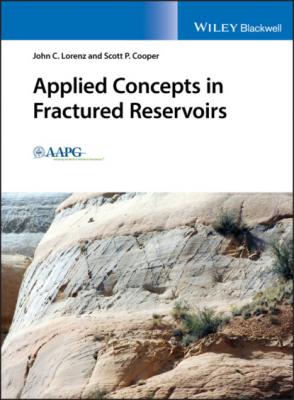ТОП просматриваемых книг сайта:
Applied Concepts in Fractured Reservoirs. John C. Lorenz
Читать онлайн.Название Applied Concepts in Fractured Reservoirs
Год выпуска 0
isbn 9781119055983
Автор произведения John C. Lorenz
Жанр География
Издательство John Wiley & Sons Limited
Table of Contents
1 Cover
2 Foreword
3 Preface
6 Part 1: Understanding Natural Fractures: Fracture Types, Dimensions, and Origin 1.1 Introduction 1.2 Nomenclature and Fracture‐Classification Systems 1.3 Fracture Characteristics and Dimensions 1.4 The Mechanics of Fracturing Rock in Extension and Shear 1.5 Other Fracture Types Appendix 1.A The Relationship BetweenPore Pressure and the In Situ Effective Stresses Note
7 Part 2: Measuring and Analyzing Fractures in Reservoirs 2.1 Introduction 2.2 Planning a Core Program for Fracture Analysis 2.3 Logging Core for Fractures 2.4 Taking, Measuring and Analyzing Fracture Data 2.5 New Core vs. Archived Core 2.6 Oriented Core 2.7 Using CT Scans 2.8 Fracture Data from Image Logs 2.9 Comparing Fracture Data from Outcrops, Core, and Logs 2.10 Fracture Data from 3D Seismic Surveys* 2.11 Fracture Data Acquired by LiDAR 2.12 Fracture Data from Engineering Tests 2.13 Case Studies in Estimating Fracture Effectiveness from Core APPENDIX 2.A Workflow and List of Tests, Data Appendix 2.B Core‐Handling,Marking, Sampling, and Analysis Protocol for Core Studies Focused on Natural Fractures Appendix 2.C Slabbing Recommendations for Horizontal Core Note
8 Part 3: Effects of Natural Fractures on Reservoirs 3.1 Introduction 3.2 Classification 3.3 The Permeability Behavior of Individual Fractures 3.4 The Effects of Fracture Systems 3.5 The Sensitivity of Fracture Permeability to Changing Stress 3.6 Fracture Volumetrics 3.7 Effects of Fractures on Drilling and Coring 3.8 Completions: The Interaction Between Natural and Hydraulic Fractures
10 Index
List of Tables
1 Part 1Table 1.1 Fracture nomenclature as used in this volume.Table 1.2 An example of the mean compressive strengths for selected sedimentary ...Table A.1 Calculated effective vertical stresses in a reservoir at 10,000 ft dep...Table A.2 Calculated effective horizontal stresses in a reservoir at 10,000 ft d...Table A.3 Calculated differential between the maximum (σV, from Table A.1) and m...
2 Part 2Table 2.1 Summary of the average parameters for each of three fracture sets in t...Table 2.2 Summary of extension‐fracture density* and effectiveness†.Table 2.3 High‐angle extension‐fracture summary chart*, all four cored formation...
3 Part 3Table 3.1 Nelson's Fractured‐reservoir Classifications.Table 3.2 The injected volumes of hydraulic fracture fluid, and the weights of p...Table 3.3 List and characteristics of the six reported attempts to stimulate oil...
List of Illustrations
1 Part 1Figure 1.1 Left: two calcite‐mineralized vertical extension fractures captured...Figure 1.2 Deformation in compression in the laboratory (from Griggs and Handi...Figure 1.3 Left: Anderson's (1951) three ideal orientations for pairs of conju...Figure 1.4 Wispy tendrils of clay and hydrocarbon, derived from the underlying...Figure 1.5 Quartz‐filled en echelon veins in silicified sandstone, southwester...Figure 1.6 The difference between a normal population distribution (top), a lo...Figure 1.7 Left: diagram of the ideal fractography of an extension fracture (a...Figure 1.8 Accretionary, congruent steps formed of comminuted host rock and li...Figure 1.9 Stepped shear‐fracture faces. Top left: asymmetric calcite slickenc...Figure 1.10 Top: bed‐normal, inclined extension fractures can form due to exte...Figure 1.11 Fracture dip angles: Left: histogram of the non‐ideal dip angles o...Figure 1.12 Left: the frequency of extension fractures by lithology from 4,200...Figure

